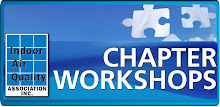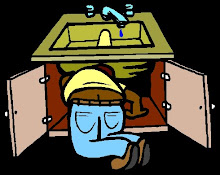 VANCOUVER, WA (February 17, 2012) - The Institute of Inspection, Cleaning and Restoration Certification (IICRC) announced today that the Board of Directors has voted to return the formal name of the organization to the IICRC, keeping cleantrust as the service mark of the organization. The full details surrounding the transition will be announced at the Certification Council on April 22, 2012.
VANCOUVER, WA (February 17, 2012) - The Institute of Inspection, Cleaning and Restoration Certification (IICRC) announced today that the Board of Directors has voted to return the formal name of the organization to the IICRC, keeping cleantrust as the service mark of the organization. The full details surrounding the transition will be announced at the Certification Council on April 22, 2012.
“We’ve heard the feedback from registrants over the past few months and considered many options,” said IICRC Chairman Darrell Paulson. “Ultimately, the board has decided to use the IICRC as the main brand and use the cleantrust as a service mark. This allows us to honor the 40-year history of our organization, while also working to gain more awareness with end-users. We are still working through all of the details and we thank the inspection, cleaning and restoration community for their patience during this process.”
The IICRC will retain the use of the updated logo, which represents the strength and breadth of the organization. The shape reflects a globe, symbolizing the IICRC’s international status. And like the organization, the logo is made up of many different parts that are working together in a unified pattern, depicting an organization that is deep in knowledge.
“Together, this powerful brand combination of IICRC and the cleantrust, will enable us to constantly work towards our mission of identifying and promoting an international standard of care that establishes and maintains the health, safety and welfare of the built environment,” said Paulson.
Updated materials with the new IICRC logo and an updated design will gradually roll out in the coming months, including ID cards, brochures, introductory video and a new website.
http://www.iicrc.org/newsflash.shtml#JJ

The former IICRC now known as The Clean Trust announces the new addition of the exam for service providers in the mold removal industry. The Mold Removal Specialist (MRS) helps to certify individuals with the proper licensing requirements within each state; ensuring that contractors meet the minimum standards. The creation of this new certification is designed to provide a greater level of accountability for remediation contractors and test the size or depth of this new certification system that exist today.
The certification (MRS) exam is an addition to the already established Applied Microbial Restoration Technician (AMRT) exam and includes the following changes:
- There are no continuing education requirements following successful completion of the MRS, only an annual renewal fee and re-certification every five years.
- The exam will be completed at a testing center located closest to the exam taker, cutting down on expensive travel requirements.
- There are no training pre-requisites required to take the exam, although such procedures are highly recommended.
- This is the first Clean Trust exam not associated with a specific Clean Trust training course. http://www.prweb.com/releases/2012/2/prweb9158481.htm
“As the IICRC seeks to be the leading, independent, non-profit certification and standard setting body within the industry, it is important that we remain proactive throughout all new regulation and legislation changes, such as in the mold remediation industry,” said Paul Pearce, IICRC Chairman Of The Board.
Even though the new certification indicates that the candidate has developed the necessary skills necessary to perform mold remediation in homes, schools and commercial buildings it certainly does not guarantee that your contractor will use the most up to date technology if Continuing Education units are not required.
Should they come about, re-certification every five years may pose a limit on the information passed to the certification system if contractors are do not revisit or learn about the new technologies involved in their trade. Similar certification systems have been established for
mold inspection companies through the national organizations known as the
IAQA and the ACAC.
The practice and protocols developed for the mold remediation process follows the industry standards, legal requirements for each candidate. It will stress the importance of per-requisites and basic knowledge of recognizing mold growth conditions. T "They will be able to design and maintain containments, control pressure differentials, and safely work in and around mold infested environments."
If "The Clean Trust", the governing body for the water damage industry, fire restoration and mold remediation.
Safety - Personal Protection Equipment - Part 1
Personal protection is a very important part of mold remediation for the workers and the building occupants.
1. Mold Remediation Technicians will use the appropriate containment/enclosures before mold remediation begins. The enclosure will usually be constructed from plastic and tape.
2. Mold Remediation Technicians will suit up in protective clothing, in addition to eye protection and respirators.
3. Mold Remediation Technicians will also establish HEPA filtering and dehumidifying machines.

Mold Removal and Remediation - Part 1
Mold removal, transportation and disposal can be completed:
1.
2.
3.
Negative Air Machine - NAM - Part 1 HEPA Filteration
The pressure of a containment can be kept in a negative pressure environment when the exhaust of the negative air machine is ducted out of the enclosed areas.
In addition to a Negative Pressure Environment, negative air machines maybe allowed to re-circulate the air within the enclosed areas and effectively "scrub" the air (or filter out the small stuff). The picture below illustrates how debris, mold spores, and dust impact the filter of the negative air machine.

HEPA Vacuums and Microbial Wipe Downs - Part 1 Cleaning
The next phase after bulk removal of the contaminated items will be to HEPA vacuum the finer debris from the top of the enclosure to the bottom, paying attention to horizontal surfaces where accumulations of dust and debris may linger.
The beginning of this phase is to remove the majority of the dust and debris from the environment. With HEPA filteration and vacuuming, a microbial wipe down within the enclosure, followed by another HEPA vacuuming is a preferred method used by may mold remediation contractors.
Other procedures such as fogging, either
Final Cleaning - Part 1
Final cleaning of the machines and subsequent removal of the filters can increase the negative air machines ability to filter out particulates and ensure a cleaner environment.
Post Remediation Testing and Verifiaction of Indoor Environment
The final stage to any mold remediation should be to verify the removal of the contaminants, to attain building material moisture and compare indoor to outdoor mold spore concentrations.
The final stage of your mold remediation project may include the use of a 3rd party black
mold testing (only) company. Those environments that do not pass first inspections is often 10-25% or more.
Results of the
post remediation mold testing will be conveyed to you by the mold inspector or final clearance mold report.



















